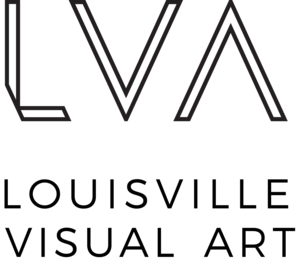Bailey and Andrew
KyCAD faculty Andrew Cozzens & Bailey Moorhead joined us to talk about the school recently being granted institutional accreditation through the Southern Association of Colleges and Schools Commission on Colleges. Tune in to WXOX 97.1 FM/Artxfm.com each Thursday at 10 am to hear Artists Talk with LVA.
Andrew Cozzens is a visual artist who researches time subjectivity and its effect on human experience and aging. He has exhibited his work nationally and internationally at Georgian in Ontario, Canada; the Arenes du Lutece in Paris, France; SCOPE at Art Basel in Miami Beach, FL; a solo exhibition during the Taipei Biennial in Taipei, Taiwan; Laumeier Sculpture Park in St. Louis, MO; and the Siena Art Institute in Siena, Italy. In 2018 he received his second Artist Development Grant from the Great Meadows Foundation and in 2010 he was an Artist in Residence at the Cite’ Internationale Des in Paris, France. He is a contributing member of the International Society for the Study of Time, and recently Andrew has curated multiple exhibitions and has been published in the International Journal of Zizek Studies and the Louisville Health Equity Report.
Bailey Moorhead’s research and teaching interests are multidisciplinary, drawing together U.S. literature and history, film and media studies, writing studies, and gender studies. Recent areas of focus include modernism, historical materialism, and critical race theory. Bailey earned their PhD in English from the University of Mississippi, where they taught courses on literature and composition. They also served as the Assistant Director of the UM Writing Center for three years. Before joining the faculty at KyCAD, she spent time at Johannes Gutenberg University in Mainz, Germany, teaching courses on writing, literature, film, and American Studies.
























